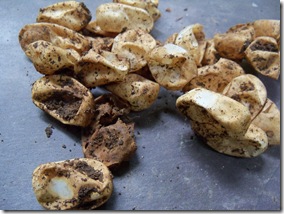Trying to keep my computing as green as I can, I am always looking for ways to improve its use. Here are a couple of utilities that I would like to share with anyone interested. Both are free to use and will cut down on waste.
The first is an ink saver called Preton Saver Home. When you click the final print button, Preton pops up where you adjust the amount of ink used for the print job. It ranges from high quality print to draught print, with in between's so you can adjust to your own liking. It even tells you how much money you have saved in ink for each job. A great way to cut down on ink wastage.
The next helps save on paper and frustration. How many times have you wanted to print out information from the web and ended up with all the bits on the web page you don't, want printed out?
Copy and pasting into Word or Open Office from the web page is laborious, and the formatting of the page is always to cock. Get Print What You Like. It sits on the toolbar in the browser ready to click when you want to print out information from the web page. You then cut out anything you don't want until you get to the bare bones of the information you want printed. Click print and you have a good clean copy. No more coloured ads, web buttons or pictures that have no relevance to the information. A great ink saver along with Preton.
Another handy thing with Print What You Like, the information can be saved as a PDF file and not printed at all, 0% ink used!
 Nothing to do with what I have written above, just thought you might like to see this lovely Rambler of ours, Leo's Eye.
Nothing to do with what I have written above, just thought you might like to see this lovely Rambler of ours, Leo's Eye.
